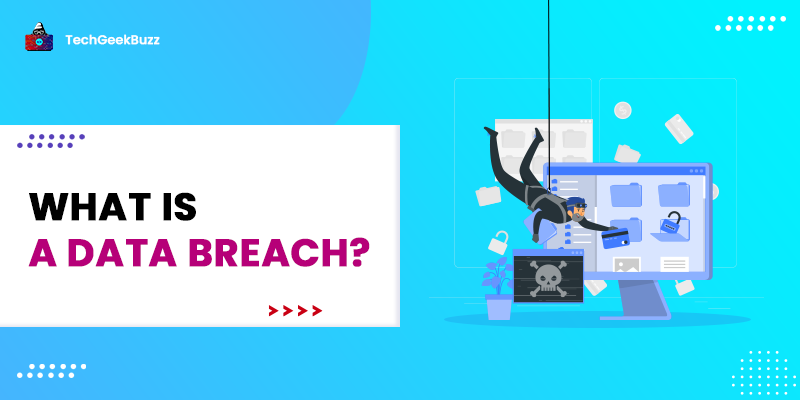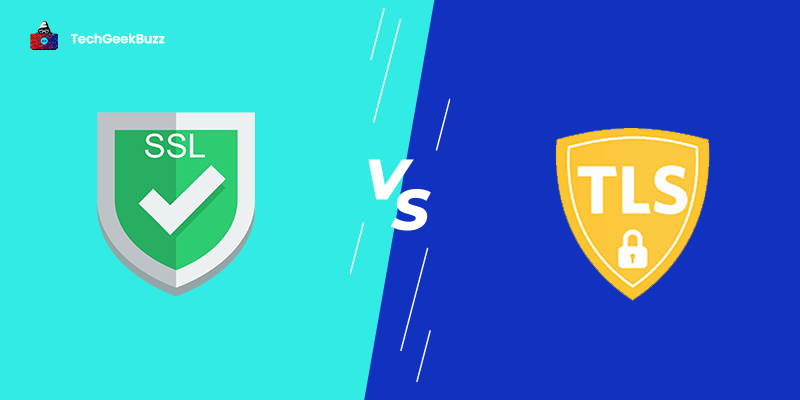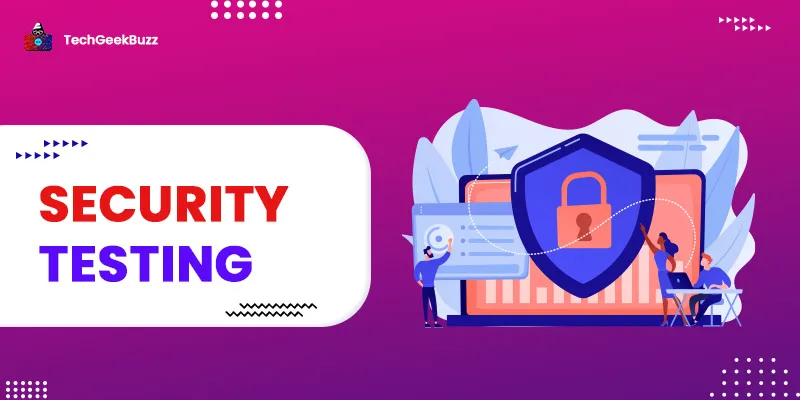Data privacy is one of the hottest topics of recent times. COVID-19 has forced most businesses to operate online. This raises an important question: how safe is our data online? With the ever-increasing online presence, we must know if our data is safe. And what measures are the company taking to ensure that there is no case of a data breach?
In this article, we take a look at what exactly a data breach is and how severe it is. Also, we shall have a look at its different types, techniques, and how we can protect against it.
Follow Along!
What is a Data Breach?
It occurs when an unauthorized individual or resource tries to access another person's data without knowledge or consent. Simply put, it is a security incident that involves the use of data unlawfully. Any organization, from small to large, can experience data breaches. They entail accessing different forms of data, including personal health information (PHI) and personal identifiable information (PII), and selling confidential or sensitive data.
According to Wikipedia, data breaches entail viewing, taking, or communicating sensitive, protected, or confidential material by someone who is not authorized. Sometimes, a data breach can also compromise financial data such as credit card details or CVV. In a word, it consists of accessing data without the consent of the data owner or the individual to which it originally belongs.
Phases of a Data Breach
The attackers carefully select the target through extensive research and vulnerabilities. In this section, we take a look at the phases of data breaches:
1. Researching the Target and Investigating the Subject
Data breaches typically start with the hackers conducting extensive research on the target firm to understand how it operates. They check job postings to learn the exact hardware and software the company employs.
Also, they look through financial filings and court documents to determine how much the target spends on cybersecurity . The business partners of the target may also be on the radar of hackers because any compromise in their security can open the door to the target's systems.
2. Scanning for Vulnerabilities
Hackers will then "probe" or search the target's systems for flaws. They typically employ software tools, like port scanners , to scan the ports of the target machine and indicate which ones are open.
Any open ports can serve as a point of entry for hackers if the target network is weak. Hackers will also attempt to "categorize" everything on it, including devices and accounts. Then, hackers will employ tools that look for known flaws or even investigate whether the system has a relatively unknown hole.
3. Exploiting Vulnerabilities Exploit Weaknesses
The hackers will launch an exploit code that takes advantage of the weaknesses after finding system flaws (that link to an open port).
Organizations can adopt active overall security to find vulnerabilities and fix them before hackers can exploit them. They can implement vulnerability management, which will systematically check their systems for flaws like zero-day threats. The in-house IT team can take the best defensive measures by using SocVue's Vulnerability Management solution, which is provided by certified experts who prioritize and analyze the vulnerabilities.
4. Delivering Payload
After exploiting the network, the hackers will move on to deliver the payload. They can install harmful software, seize control of servers, or access internal user accounts to accomplish this. By now, the hackers have taken control of their target's computer system and are ensuring they have access to the crucial data they require.
5. Extracting Data
In the end, the data that the hackers were after—whether it was private health information, medical records, intellectual property, or anything else, they will download it. There is an odd activity in the network security monitoring systems , but hackers won't be able to get this far because of solid cyber defenses.
Notable Data Breaches
Here are some notable data breaches that have occurred in the past:
1. Yahoo
Date: August 2013
Impact: 3 billion accounts
The attack on Yahoo has taken the top rank, some seven years after the initial hack and four years after the precise quantity of papers leaked went public. The incident occurred in 2013 and was first made public by the firm in December 2016. It thought that a hacker gang had obtained the account information of more than a billion of its subscribers as Verizon was buying it. A year later, Yahoo revealed that 3 billion user accounts were hit.
2. Alibaba
Date: November 2019
Impact: 1.1 billion user data points
A developer for an affiliate marketer used his crawler software to collect user information from Alibaba’s Chinese shopping website called Taobao over eight months, including usernames and mobile numbers. Although the developer and his company received a three-year prison sentence, they only gathered the data for their purposes and not for sale on the black market.
3. LinkedIn
Date: June 2021
Impact: 700 million users
The breach of data from a dark web forum containing 700 million users' information in June 2021 affected more than 90% of LinkedIn's user base . A hacker with the handle "God User" employed data scraping methods to abuse the site's (and others) API before disclosing the first information data collection of over 500 million members. They said they were selling the entire 700 million client database as a follow-up.
No loss of sensitive, private personal data was there, according to LinkedIn, which claimed that the occurrence was a violation of its rules of service rather than a data breach. The god user leaked email addresses, phone numbers, geolocation information, genders, and other social media details in the user data. This gave the hackers enough information to design successful, follow-up social engineering attacks following the release.
4. Facebook
Date: April 2019
Impact: 533 million users
In April 2019, two Facebook app datasets were accessible to the general internet. The datasets included phone numbers, account names, and Facebook IDs of more than 530 million Facebook users.
Two years later, in April 2021, the data was freely shared, indicating new and sincere criminal intent toward the data. Troy Hunt, a security researcher, enhanced the functionality of his HaveIBeenPwned (HIBP) compromised credential verification website in light of the enormous amount of phone numbers that were impacted and made easily accessible on the dark web as a result of the incident. Users may then see if their phone numbers were included in the dataset that had been made public.
Types of Data Breaches
Primarily, there are three types of data breaches, namely Physical, Digital, and Skimming. Let us have a glance at each of these types below.
1. Physical Breach
A physical breach occurs when there is a physical theft of storage devices such as hard drives, flash drives, or some important documents, files, or PCs. Any case that entails the stealing of important hardware is a physical breach. This is also known as corporate espionage. Some items that are at risk include:
- External hard drives
- Laptops and personal computers
- Any asset may contain user details such as bills, fax copies, cheques, or any other document.
We can prevent such an assault using security and access control measures. Never neglect to destroy equipment once it has served its purpose. It's common for no one to notice stolen old PCs and forgotten hard drives from storage closets, making them excellent targets for physical invasions.
2. Digital Breach
An electronic breach is an unauthorized entry or a targeted attack on a system or network environment that processes, stores, or transmits cardholder data.
This could happen due to application-level assaults that access a system's vulnerabilities through web servers or websites .
For instance, the healthcare sector is frequently impacted by data breaches since access to these networks exposes confidential patient billing information.
Organizations should use encryption to avoid any data breaches. Along with that, there should also be a practice of shredding the drives. In many cases, hackers gain access and can break the encryption, but they cannot retrieve anything from a shredded drive.
3. Skimming
It is the process of reading and capturing magnetic stripe data from credit cards' backs. The scammers may secretly install a third-party gadget to retrieve data from your card and send details about the ships. They may potentially skim a card using an external device to read the magnetic stripe information. These identity thieves gather data and utilize it to make forged debit and credit cards.
Here are some pointers for reducing the possibility of skimming:
- When employees frequently have credit cards in their hands in plain sight of the cardholder, we must keep a check on how we handle our credit cards and keep them secure.
- Keep a close eye on PIN-pad devices and Point-of-Sale activity.
- Check the equipment frequently for signs of tampering or associated skimming devices.
- Ensure you are not utilizing a PIN pad or Point-of-Sale terminal known to be vulnerable by contacting your credit card processing service provider.
- Procedures should be in place for petroleum companies to monitor what happens outside point-of-sale pumps. This requires regularly opening devices to check for modifications or installed skimming devices.
How Does a Data Breach take Place?
Here are different methods of how data breaches can occur:
1. Password Guessing
A website often allows unlimited password guesses and tries. This helps the hackers use password-breaking devices that run down many possibilities until they get a match. Also, if you have a relatively weak password, they will crack your password in a matter of seconds. Password management programs are one approach to help keep passwords organized and centrally secured while assisting users in managing complex passwords.
2. Insider Threat
Employees are a significant threat in data breach cases. Someone with deep access to the system can easily bypass all the security measures and gain the data without sweat. Many times, these cases arise due to greed or revenge.
3. Backdoor
Any undocumented method of gaining access to the data, whether intentional or unintentional, is a significant threat to data breaches. The organization can significantly suffer from these types of attacks.
4. Lack of Access Control
It is possible for any organization to suffer significant losses due to not having the latest access control system. There must be predefined access for every employee to avoid data misuse. The organization should employ multi-factor authentication (MFA) to protect access control.
5. Hardware Misplacing or Stealing
It is a hazardous factor if there is no proper and secure storage space for hardware. The attackers may steal away all the drives with valuable assets. Making a safe storage space for such hard drives and documents is essential.
6. Social Engineering
It is one of the significant cyber threats present. Many criminals use this method and take advantage of human error to access restricted content. One should always be on alert for such cases.
Read more about it: What is Social Engineering?
7. Physical Breach
If the attackers gain knowledge of the secret facility or the location where all the personal data is present, it will be challenging to protect. The organizations should keep a wrap on the site of this kind of place.
8. Phishing
It can employ other techniques to collect information that can be used to obtain access to data, though it frequently involves malware to steal data.
Gain more insights into it: What is Phishing?
9. Keylogger
This malicious software keeps track of each keystroke made on a computer keyboard and uses that information to steal the usernames and passwords needed to access data.
10. Point-of-sale Intrusion and Card Skimming
A user-focused threat reads credit or debit card data that could be used later to breach or get around security safeguards.
11. DDoS Attacks
Cyber attackers may use a DDoS attack to divert security administrators so they can utilize other techniques to access data. Additionally, when companies make changes to counter an attack, it may result in incorrect setups that open up new doors for data theft.
12. Data in Motion
It is possible that hackers can intercept unencrypted data when traveling across a vast area network, through a corporate local area network, or transported to one or more clouds. Organizations can improve their data protection in motion in two ways: uniform cloud security and end-to-end data encryption.
13. Malware
Whether it's any type of malware, such as ransomware, or other associated activities, such as SQL injection, they all are possible by gaining access to systems or applications.
14. Accidental Data Exposure or Leakage
Cybercriminals may benefit from configuration errors or mistakes in data judgment.
What is The Target of Data Breaches?
Cybercriminals stick to a simple strategy: a breach against an organization. They investigate their targets to find weaknesses, such as out-of-date software or staff members susceptible to phishing assaults. They do extensive research on their targets and plan their moves accordingly.
Further, they develop a strategy to deceive insiders into accidentally installing malware after discovering a target's vulnerabilities. On rare occasions, they specifically aim after the network. Dangerous hackers can freely search for the data they want once inside, as it frequently takes more than five months to detect a breach.
Common vulnerabilities that hackers target are:
- Phishing-related attacks provide a significant security concern because, if successful, scammers use them to access your bank and internet accounts.
- Malware assaults are used to get beyond the standard authentication safeguards for computers.
- Fraudulent cards use card skimmers connected to petrol pumps or ATMs and steal data when a card is swiped.
- Unauthorized access: Even if you take all reasonable precautions to keep your network and data secure, malicious hackers may still find a way into your system by using third-party providers.
- Mobile technology: When employers permit employees to use their own devices at work ( BYOD ), it's simple for unprotected devices to download malware-filled apps that offer hackers access to the device's data. Along with the owner's PII, this frequently also includes work emails and files.
How to Remove Data Breaches?
If ever the situation arises and you find yourself in the middle of the data breach situation, you should follow the given procedures to get out of it:
- Change Any Exposed Passwords
If your password has been compromised, you must update it wherever you've used it—not only on the affected services. Using a password manager, which enables you to save different, challenging passwords for each account, is the quickest method to accomplish this.
Even if each account needs a special password, it's a good idea to start by changing the passwords for the ones you know were affected by a data breach.
- Switch to an Authentication App from a Text-Based MFA
Attackers might use your name and phone number to attempt to log into your account. You can enable multifactor authentication (MFA), which requires a second factor in addition to your password to log in on various websites, including social media and banking. In this manner, even if a hacker obtains your password, they will be unable to access your account.
- Remove Your Home Address
After a data breach, you can report and ask for the removal of any instances where your home address has been made public on another website.
You may notify Google if searches for your address turn up. You can have your address removed from the search results using either of those search engines.
- Freeze Your Bank Account
Freezing your bank account will limit access to it if your bank information is exposed, making it more difficult for identity thieves to open new accounts in your name. This will also prevent any transaction the hackers can do if they hold your bank details.
- Remove any Accounts You aren't Using
You may be at risk of data theft or misuse if you have too many digital accounts. Finding accounts for platforms that are no longer in use or that you haven't used in a long time is the first step in getting rid of them. Search engines can check for combinations of your name and email address or old and new usernames.
How to Protect Against Data Breaches?
Here are six tried-and-true strategies to guard against cybersecurity breaches:
- Keep Limited Access to your Essential Data
In the day, every employee had access to every file on their computer. Today's businesses are learning how crucial it is to limit access to their most critical data. After all, a mailroom employee doesn't have to see a customer's financial data. You can decrease the number of employees who might mistakenly click on a dangerous link by limiting who is allowed to read particular articles.
One of those straightforward solutions that businesses should implement is the partitioning off of all records as organizations move into the future, allowing access to just those who truly need it.
- Difficult Passwords to Crack
Companies used to set limits on how frequently workers had to update their passwords. Recent cyberattacks have altered everything. Security professionals will emphasize the importance of routinely changing all passwords when they visit your organization to train your staff.
Most people are now aware of how crucial it is to make passwords challenging to crack. We have mastered using capital letters, numbers, and special characters when creating passwords, even on our home PCs. Make it difficult for burglars to enter and steal your belongings.
- Make a Strategy for Handling a Cyberattack
What would you do if a data breach happened when you got to work tomorrow? Surprisingly, few companies have a solid breach response plan in place. Either they don't think they could need one soon, or they think they can handle the required response.
There is a severe fallacy in this way of thinking. In the past, when cybercriminals got in and stole papers from large organizations, they were slow to disclose the incident. Furthermore, they were unwilling to acknowledge the quantity and type of stolen data.
The company and the employees can grasp the potential losses by creating a thorough breach preparedness strategy. Employees want to know the truth. Therefore an employer should be very open about the extent of the violation. A sound response strategy can reduce lost productivity and stop lousy presses. They become incensed when workers learn that their employer experienced a data breach six months prior and that no one informed them of it.
- Regularly Update your Software
Professionals advise routinely updating all operating systems and application software. When patches are available, install them. When programs aren't constantly patched and updated, your network is exposed.
You can use the Baseline Security Analyzer , the software from Microsoft, to check that all programs are fixed and current periodically. This is a relatively simple and affordable method to fortify your network and prevent attacks from occurring.
- Conduct Security Awareness Training for the Staff
According to recent research, employees are the weakest link in the data security chain. Despite training, workers read suspicious emails with the potential to download malware every day. Employers assume that one cybersecurity training session is sufficient. However, that is not true. Schedule frequent quarterly or monthly sessions if you're serious about protecting your crucial data.
Data Breaches Laws and Regulations
Governments worldwide have placed regulations that oblige businesses and organizations to make some form of disclosure after experiencing data breaches. Formerly, parties that had their data compromised could keep it a secret for as long as they liked.
Any organization must take the following actions at the center of data breaches:
- Inform those impacted as soon as possible of what transpired.
- Inform the government as quickly as you can, usually by alerting the state's attorney general.
- Pay the appropriate fine.
In previous cases, the companies like Facebook and Yahoo managed to keep their data breach a secret for an extended period. But now, with these new laws in the act, the consumer can sue the company if there is any case of a data breach. Also, the company will be under prosecution by the government if the company fails to report any occurrence of data breaches.
Conclusion
To summarize, in this day and age, where information is our most valuable asset, organizations must ensure that data is safe and secure. We are always working on making sense of all the organized and unorganized data types. Additionally, each person must ensure they are using the internet properly by only going to reputable websites, utilizing reliable software, and actively limiting the amount of information they disclose to third parties.
We hope this blog post has helped you in gaining insights into data breaches.
Stay Caution. Surf Caution.
People are also reading:





Leave a Comment on this Post